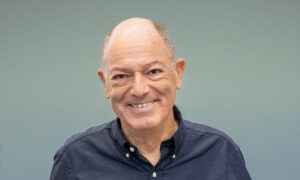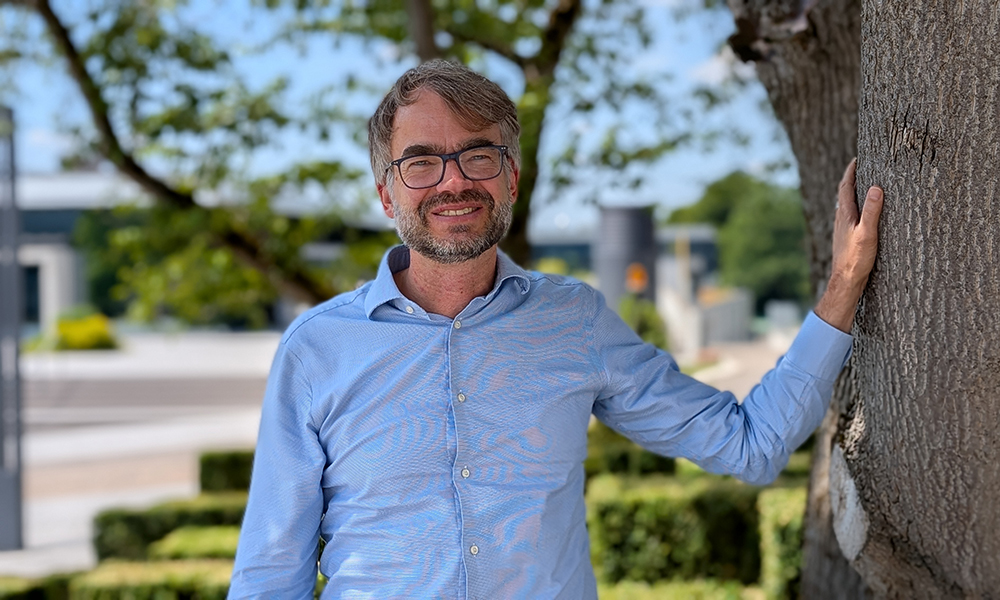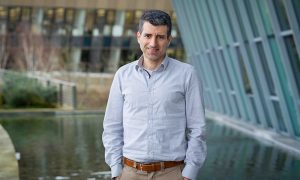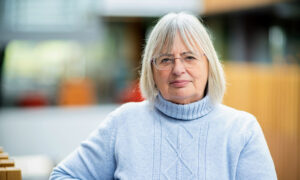
Bridging advanced tools in molecular biology research
A new doctoral network trains fellows as it potentially pioneers a whole new way of exploring the cellular genotype-phenotype link

For 12 doctoral candidates who are part of a newly formed ZooCELL network distributed around Europe, their path to PhDs may be among the most exciting in the life sciences.
With expertise coming from many varied directions, they aim to probe genotype-phenotype connections in unprecedented detail, tapping the best sequencing and imaging techniques at single-cell resolution. The information they uncover is not only likely to expand our understanding of organisms’ abilities to adapt, but it may also create a whole new way of doing this kind of science.
EMBL Group Leader and Senior Scientist Detlev Arendt, who was also the network coordinator for EvoCELL, the predecessor network to this effort, will once again lead the way, eager to see the potential of using tools that are only now available to scientists and often not used together. We had the opportunity to put forth questions to him about the network and his expectations.
Tell us about the ZooCELL network and what it hopes to achieve.
Funded by the European Union’s Horizon Europe research and innovation programme and with support for UK participants from UK Research and Innovation, ZooCELL is a Marie Skłodowska-Curie Actions Doctoral Network (MSCA-DN) that will train 12 highly skilled doctoral candidates in a new field of comparative integrative cell biology in animals and also in public outreach. Together, we want to get closer to the genotype-phenotype link than ever before at the whole-organism level, bridging sequencing and imaging at cellular resolution for entire animals. Fellows will also gain important skills to assume leadership roles in academia, industry, and science outreach.
Members of the network are funded under Horizon Europe to implement international, interdisciplinary, and intersectoral doctoral programmes. Our network, which EMBL coordinated, brings together 10 labs across four European countries and two labs in the UK. Five additional partners from both academic and non-academic sectors will also support our training activities.
What is comparative integrative cell biology in animals?
Biologists are now at a point in volume microscopy and sequencing data collection where they can gain comprehensive knowledge of the different molecular machineries present in cells and how they change the subcellular morphology. Deep learning approaches are now available to reduce the dimensionality of these vast datasets to detect correlations between gene expression and morphological features that were previously impossible to detect. Comparative integrative cell biology thus enables a new understanding of these cellular structures (and by extension, tissues, organs, and entire organisms) with data across biological scales using tools such as genomics, transcriptomics, artificial intelligence, and computational modelling.
Due to technical and analysis limitations, decades of meticulous electron microscopy studies have largely remained separate from complementary work that provided an emerging understanding of the genetics of cellular structure and identity. Consequently, we have so far been lacking a comprehensive approach to elucidate the interplay between gene expression and subcellular functions and phenotype (those traits that result from a combination of genetics and environmental response in every cell of the body).
Combining volume electron microscopy (vEM) with cellular-resolution gene expression and profiling for entire organs and animals is bringing together molecular and morphological cell type characterisations. Automated recognition of structures and the integrated analysis of the diverse data through AI-based approaches will combine modalities to an unprecedented extent. For the first time, we can link function, ultrastructure (a cell’s detailed internal structure that can only be seen with powerful microscopes), and gene expression at the level of single cells and compare these aspects of single cell biology between species, allowing us to understand evolution at the level of single cells.
The scientists in ZooCELL specifically aim to create a comprehensive view of ‘sensory cell’ evolution based on the discovery of recurrent patterns of genetic and subcellular structure across a wide range of new animal models. To this end, we will create cellular atlases by combining single-cell genomics, correlative light and electron microscopy, as well as artificial intelligence.
Sensory cells comprise about a third of neurons, so understanding their evolution is critical to understanding the whole nervous system’s evolution. These cells are also central to how we detect environmental stimuli, such as sound, light, vibrations, chemicals, temperature, and other signals; thus, the connection to phenotypes. Lastly, they have a broad range of subcellular modules, from endomembrane structures through various cytoskeletal systems to the complex receptor apparatus of sensory cells, adding an important degree of complexity to understanding how they work.
The atlases will reveal how a multicellular organism is built. What cells comprise the organism? Where is each cell type situated? At a very high resolution, what are the cellular phenotypes? And how do these cellular phenotypes correlate with the genes that each cell expresses? Eventually, we can functionally validate new candidate genes correlating with interesting cellular phenotypes using knockout approaches now feasible in many of our models with CRISPR-Cas9-based techniques.
These cellular atlases promise to help us understand how novel cell types are specified at the level of gene transcription and then integrate processes such as pattern formation/embryonic development and cellular differentiation. Comparisons of atlases between species will allow us to investigate in unprecedented detail how novel cell types evolve and pinpoint the ancient origins of some highly conserved cells.
What was the impetus for creating ZooCELL?
ZooCELL is a successor network of many other MSCA-training initiatives that we have run together with almost all the labs now participating in ZooCELL. It’s the natural successor of EvoCELL, the last MSCA training initiative we carried out together. It explored how cell types evolved by analysing and comparing gene expression profiles of individual cells across different organisms using single-cell sequencing techniques. With ZooCELL, we take this a step further by integrating the analysis of both morphological and genetic features at the single-cell level. This simply wasn’t possible before, so we now have the capability and tools to explore the genotype-phenotype link at the cellular level in this unprecedented approach.
You held your first network-wide training for participating fellows in early February. Will there be more opportunities like this?
Yes, doctoral networks have a strong training component. At ZooCELL, we have designed a truly interdisciplinary and intersectoral training programme. The fellows will participate in two network-wide events each year: a practical course and a graduate school. We aim to provide a broad, modern, and multidisciplinary set of skills to meet the challenges of working on diverse animal models with new omics and image-analysis technologies to offer new insights into animal evolution. An important mission of ours is to promote a culture of collaboration and stimulate knowledge, data, and skill-sharing among the network’s labs and beyond. Practising open science is critical.
But our training won’t be limited to scientific training. We will also have a strong public outreach component. We have planned an outreach workshop and several outreach activities throughout the project. The network will also expose the fellows to non-academic sectors, exploring possibilities of inter-sectoral research, thus acquainting them with diverse career options in non-academic settings, such as industry, museums, and publishing. In its last year, fellows will be responsible for organising a symposium for the wider evolution development community.
What will ZooCELL’s impacts be?
We expect that the results ZooCELL generates will lay the groundwork for a new field of research that has already started to emerge in the past years and that includes many of the participating labs. Thanks to our commitment to open science, the atlases we produce will serve as rich resources of information on the genetic and morphological phenotypes of cells across entire organisms, all at single-cell resolution.
The methodologies we establish will provide a blueprint for other researchers to build similar atlases for their model organisms, thereby expanding the reach and impact of our work. In this way, we anticipate that ZooCELL will act as a catalyst for broader collaboration and growth in the coming years.
What about the impacts on the doctoral fellows and what they might go on to do?
The best possible outcome would be to successfully train 12 doctoral candidates who go on to assume leadership roles in Europe – in academia and also in industry – thus impacting both the European life sciences landscape and the knowledge-based economy. Of course, we are most excited about potentially founding a whole new field on the cellular genotype-phenotype link. With AI and genetic validation, we ultimately hope to predict gene expression from volume images and vice versa, and educate a cohort of scientists who are ready to chart this course further. We hope that our training programme, which goes beyond ‘pure science’, will foster gender equality awareness, critical thinking, and resilience, helping to shape a well-rounded scientific mindset. Additionally, through this network, we hope the fellows will establish lasting collaborations across the continent that support and enrich their careers in the long term.


